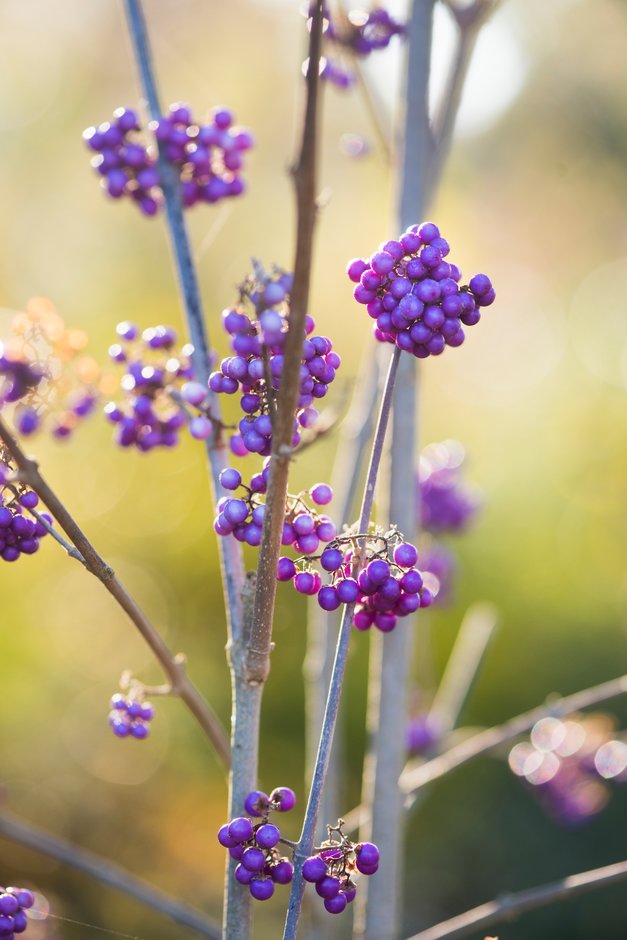Callicarpa bodinieri var. giraldii 'Profusion'

beautyberry 'Profusion'
A medium-sized deciduous shrub of upright habit, to 3m in height. Leaves 5-12cm in length, lanceolate, purplish when young, turning rosy-pink in autumn. Flowers small, lilac; berries 4mm, violet-purple, in compact clusters
Size
Ultimate height
2.5–4 metresTime to ultimate height
10–20 yearsUltimate spread
1.5–2.5 metresGrowing conditions
Moisture
Well–drainedpH
Acid, Alkaline, NeutralColour & scent
| Stem | Flower | Foliage | Fruit | |
| Spring | Bronze | |||
|---|---|---|---|---|
| Summer | Purple | Green | ||
| Autumn | Pink | Purple | ||
| Winter |
Position
- Full sun
- Partial shade
Aspect
West–facing or South–facing or North–facing or East–facing
Exposure
Exposed or Sheltered Hardiness
H6Botanical details
- Family
- Lamiaceae
- Native to GB / Ireland
- No
- Foliage
- Deciduous
- Habit
- Bushy
- Potentially harmful
- Fruit are ornamental - not to be eaten. Wear gloves and other protective equipment when handling Pets: Fruit are ornamental - not to be eaten - see the HTA guide to potentially harmful plants for further information and useful contact numbers
- Genus
Callicarpa can be evergreen or deciduous shrubs, with simple, opposite leaves and tiny white pink or purple flowers in axillary clusters, followed by small, usually colourful fruits. Several shrubs grown together ensures pollination for successful fruiting
- Name status
Accepted
How to grow
Cultivation
Grow in fertile well-drained soil in sun or partial shade
Propagation
Propagate by softwood cuttings or semi-hardwood cuttings
Suggested planting locations and garden types
- Cottage and informal garden
- Low Maintenance
- Cut flowers
Pruning
Pests
Generally pest-free
Diseases
May be susceptible to honey fungus (rarely)
Love gardening
Sign up to receive regular gardening tips, inspiration, offers and more
View our Privacy Policy
Get involved
The Royal Horticultural Society is the UK’s leading gardening charity. We aim to enrich everyone’s life through plants, and make the UK a greener and more beautiful place.

